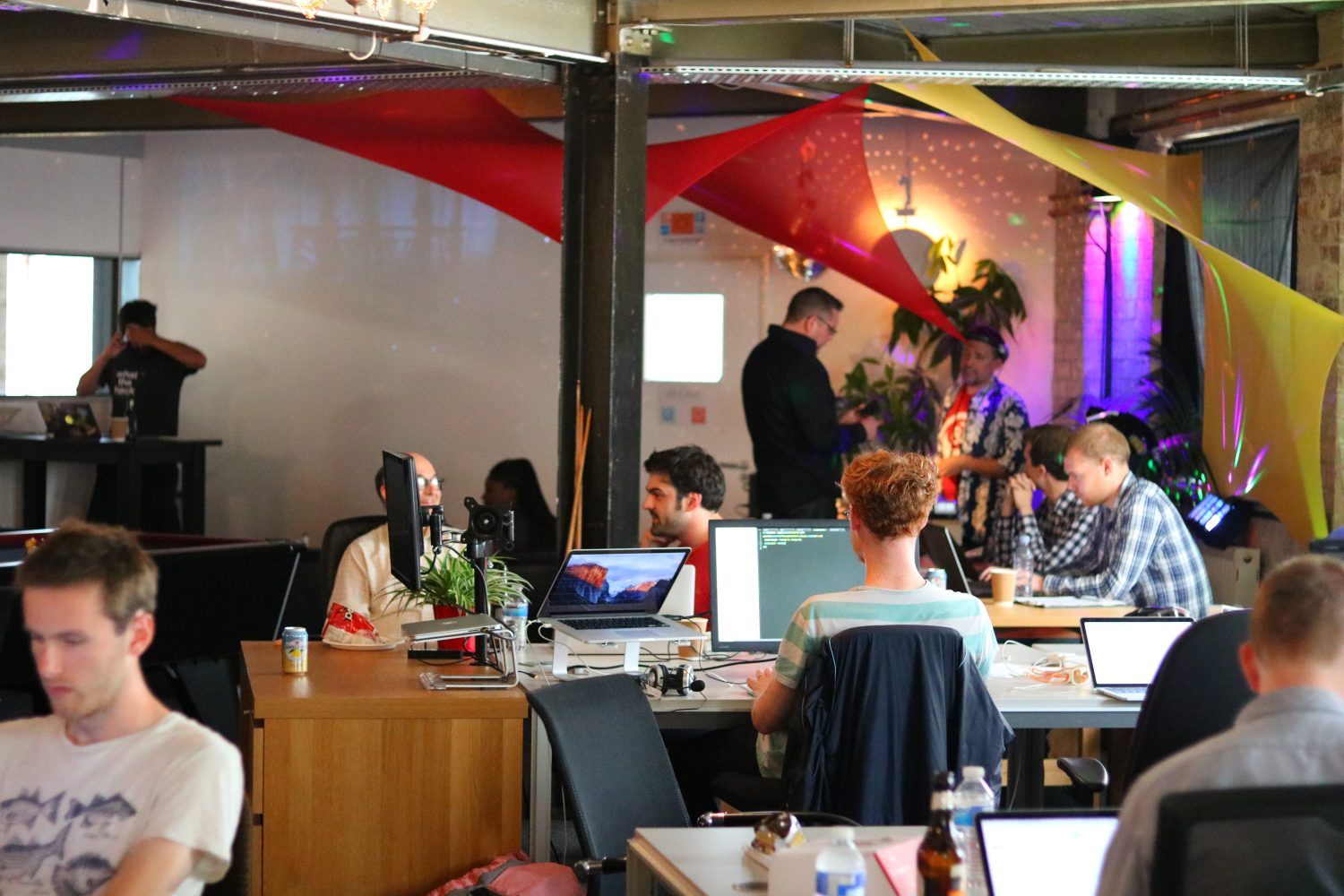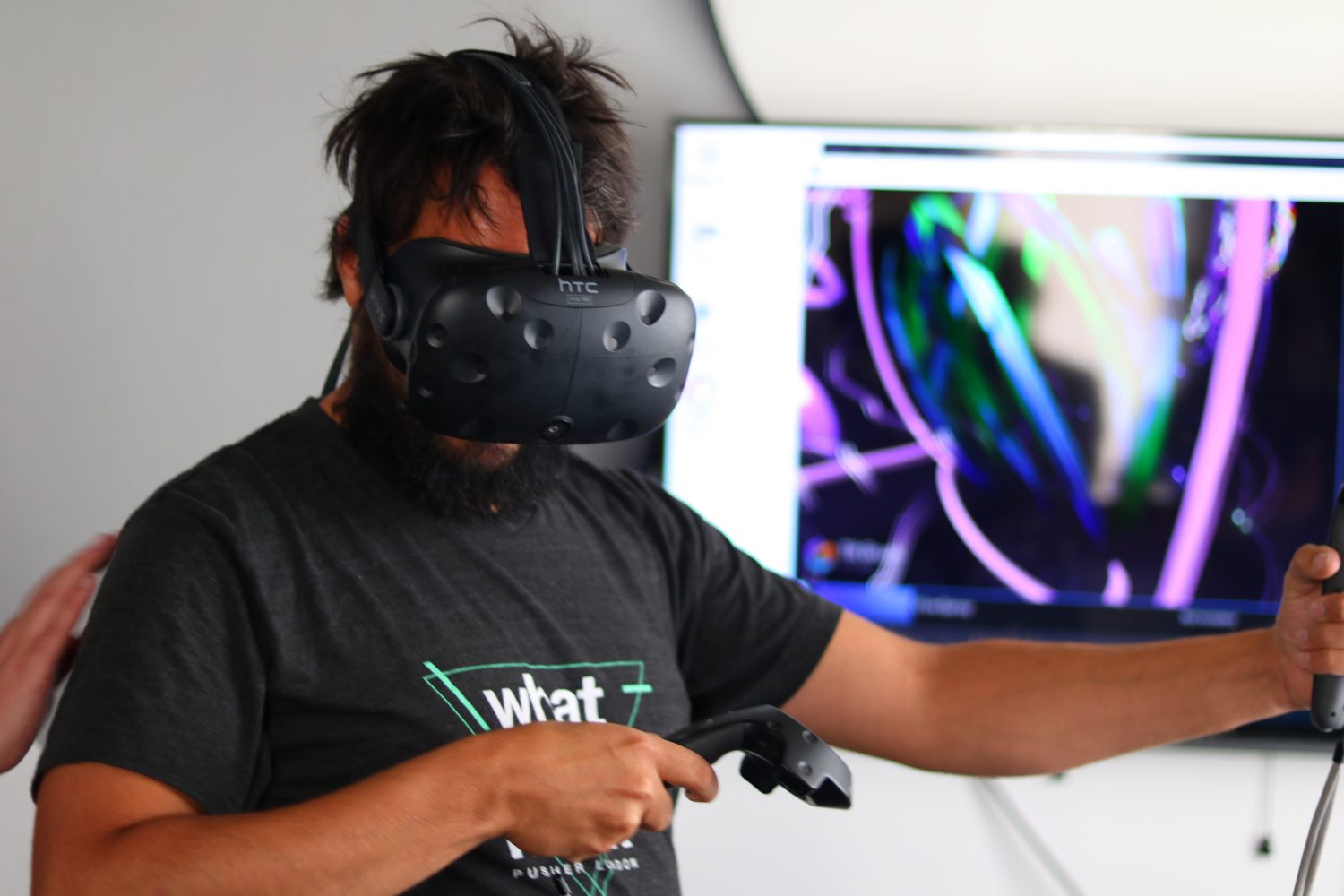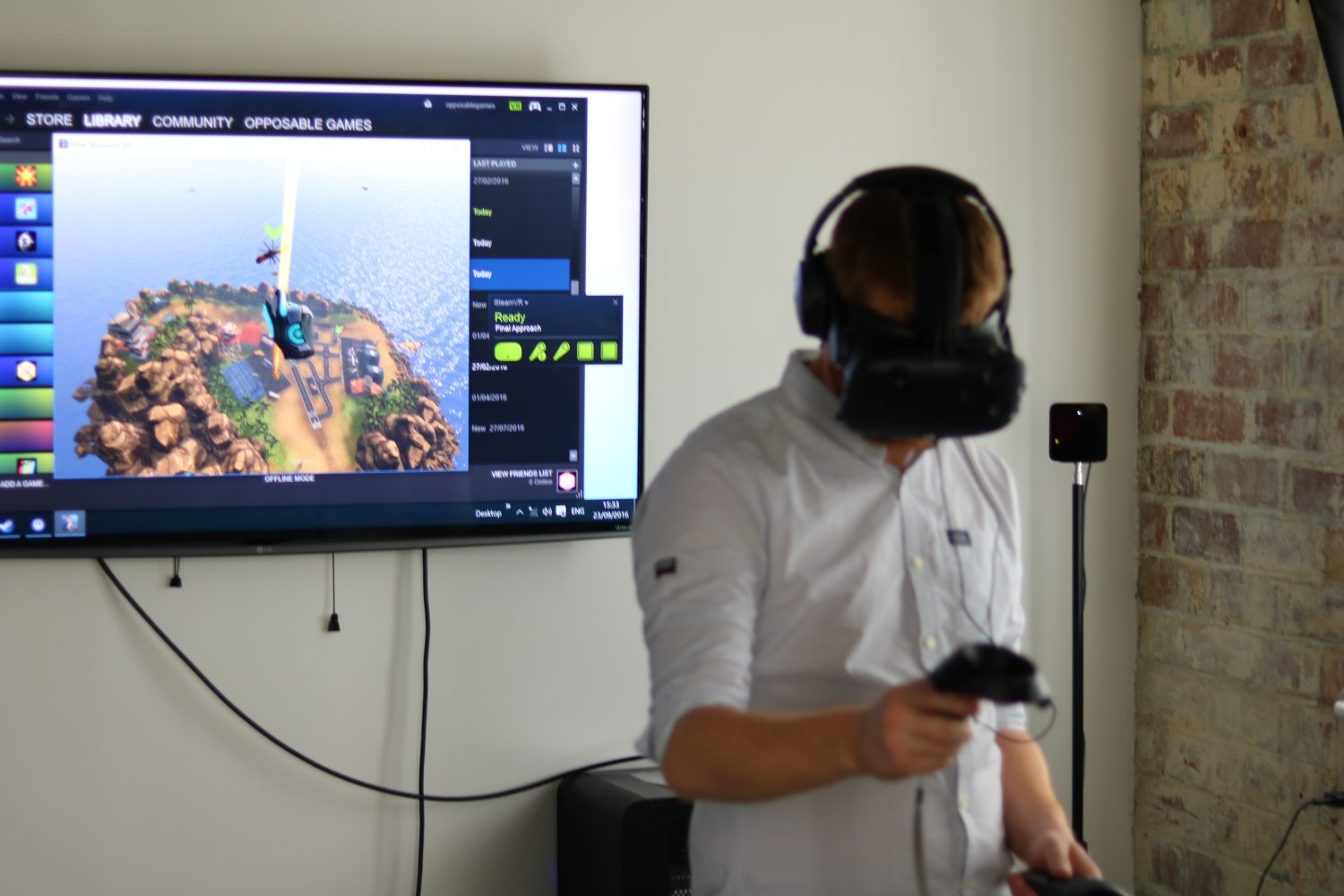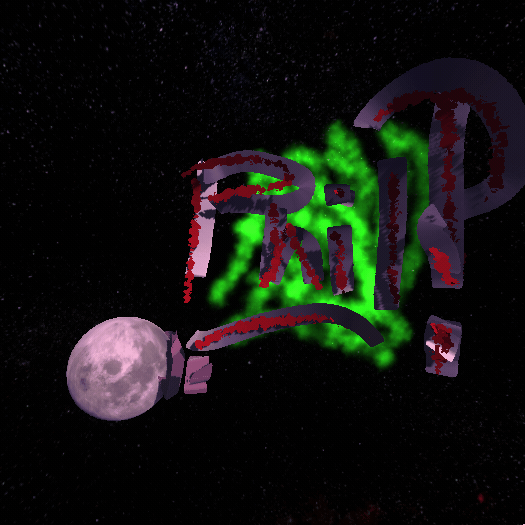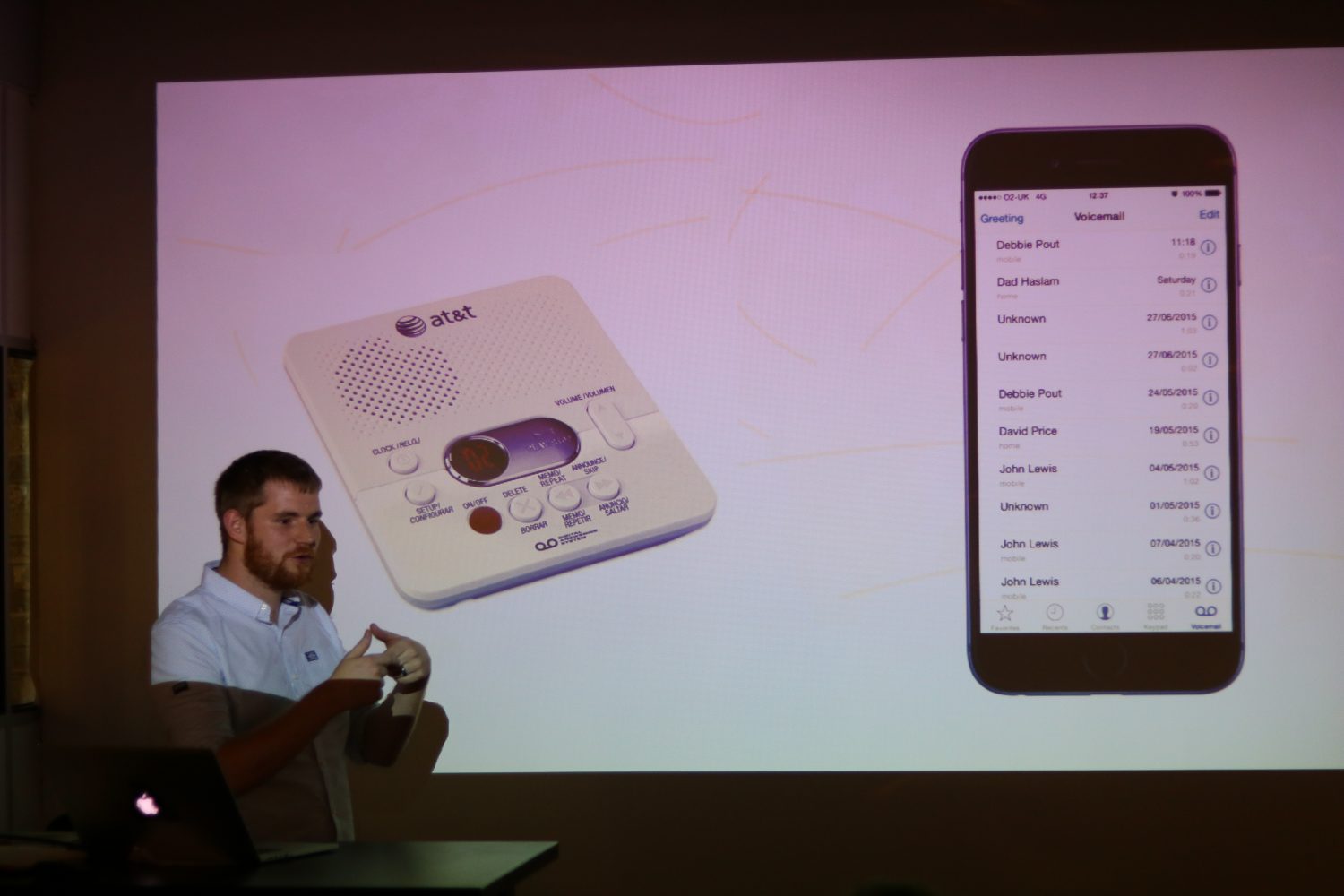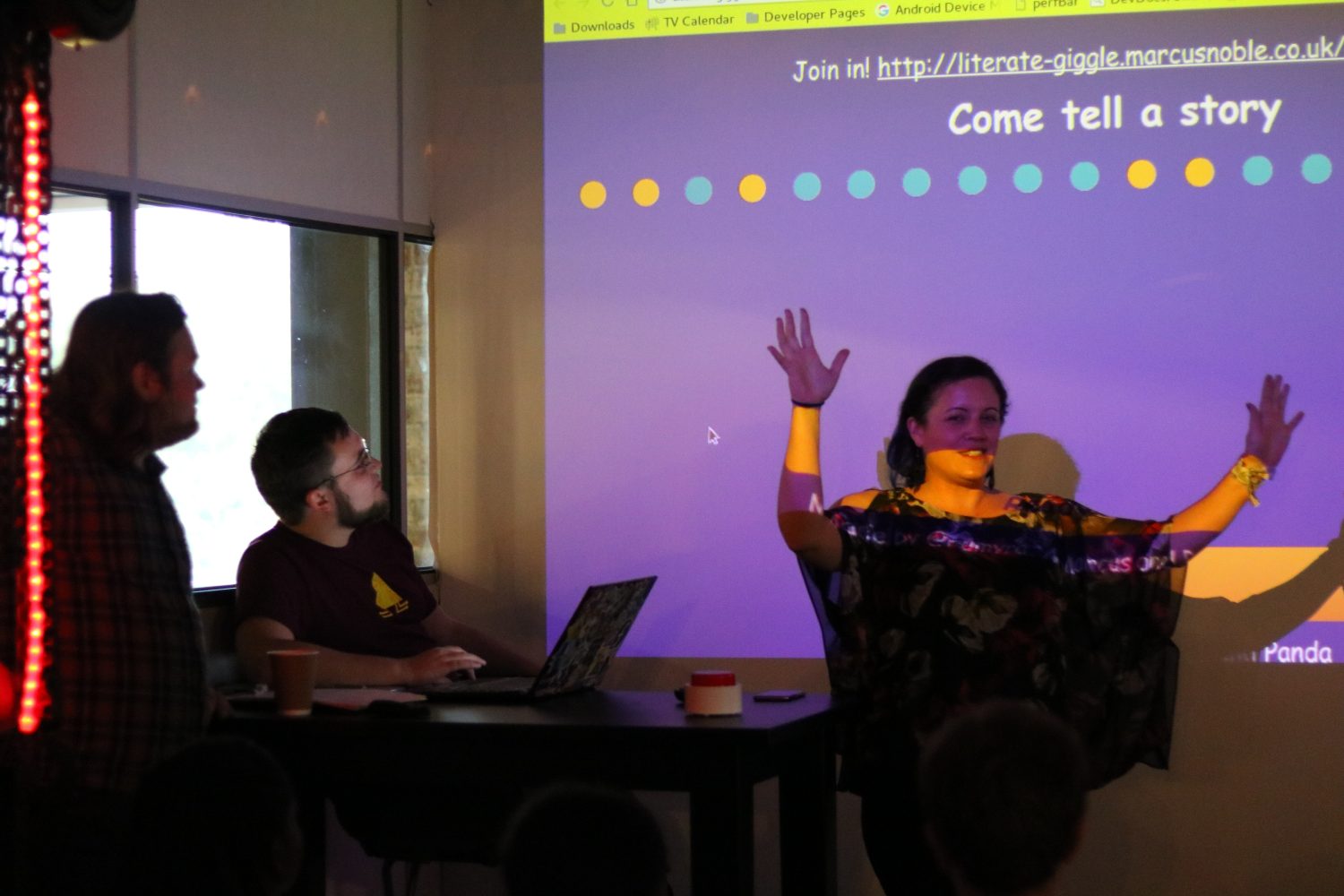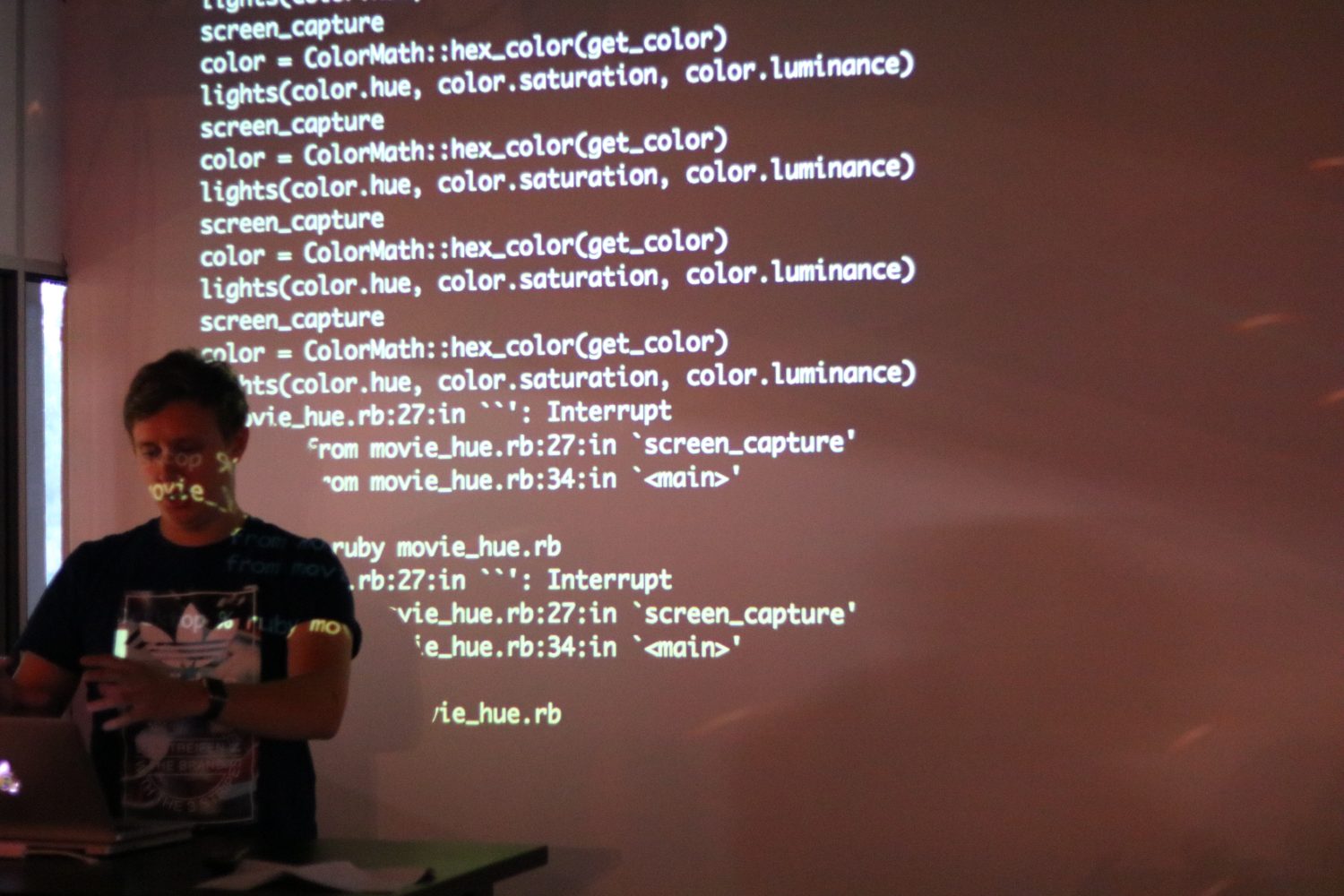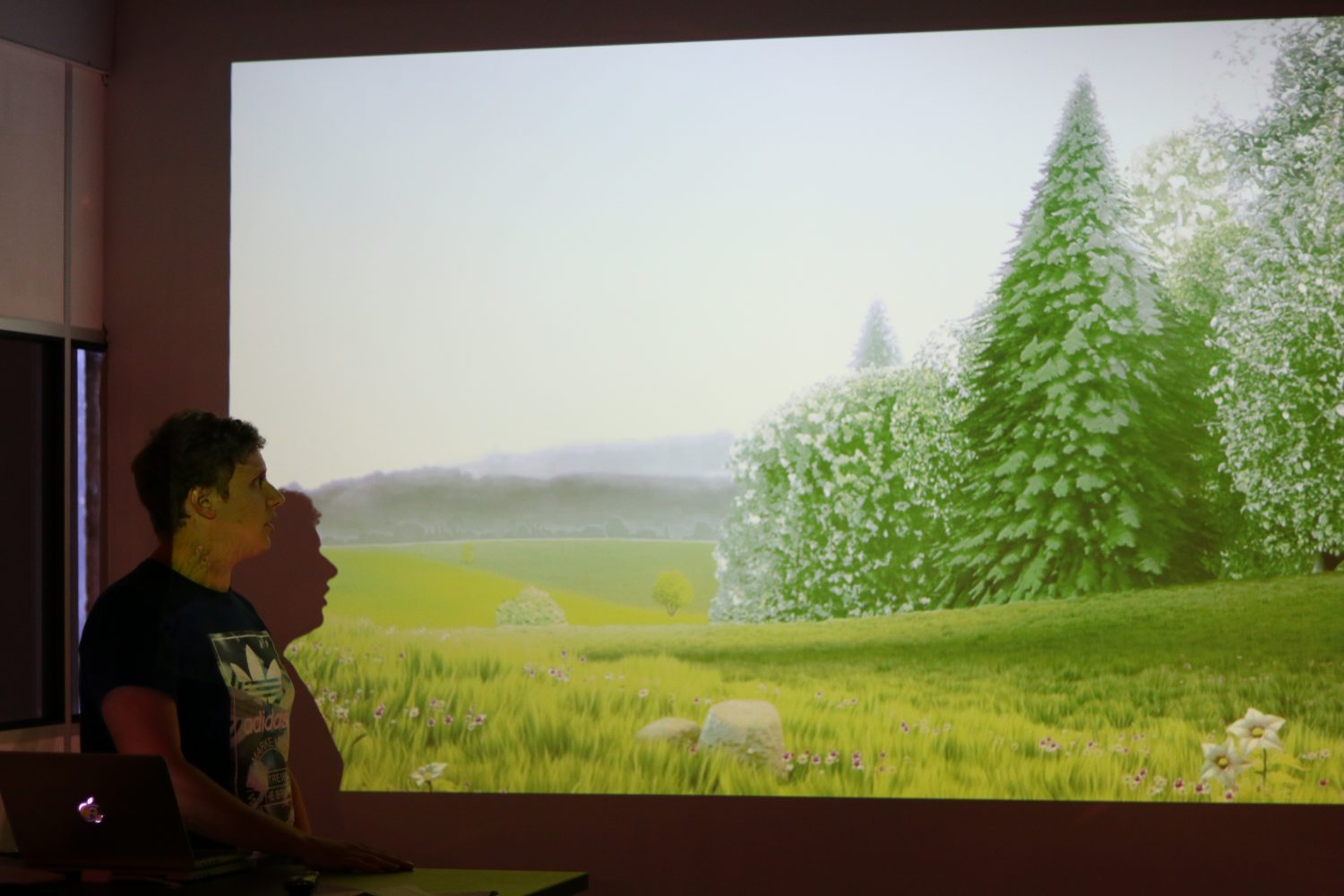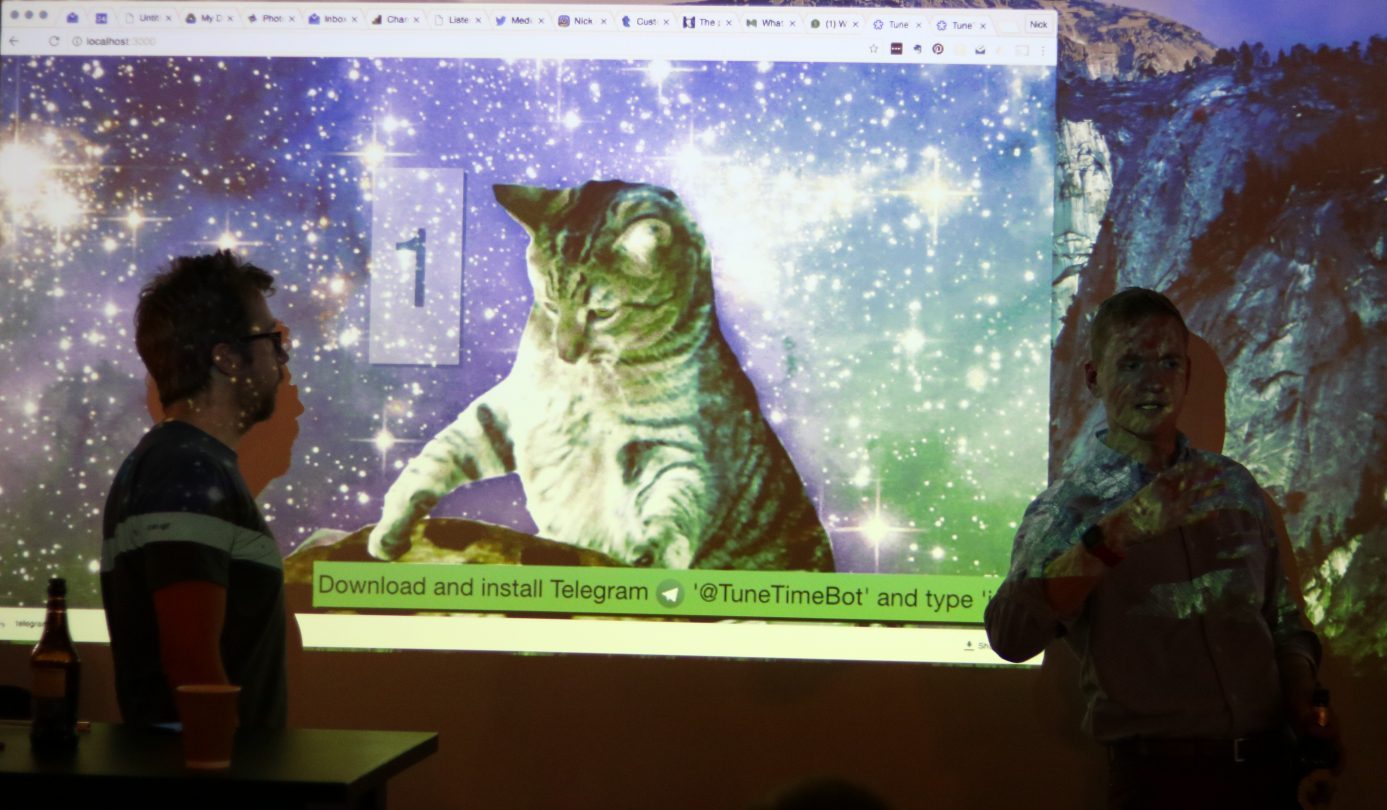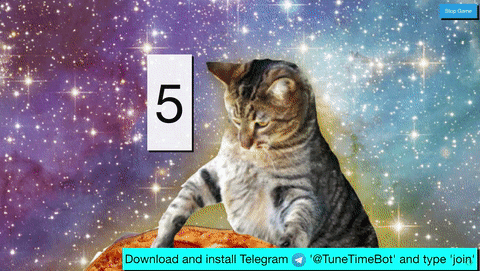Last weekend we held our first all day hack day – sponsored by Twilio, Pusher and Marvel – challenging techies and non techies to create working prototypes or concepts around the theme of ‘the future of chat’.
A.I. supported chatbots have been a huge trend this year. The uprise of A.I., which aims to replicate real human interaction, is already changing the way we interact with technology and each other and we couldn’t wait to see what other futuristic chat innovations people would come up with.
Here at Simpleweb, we believe great apps aren’t just about great technology – so we asked both techies and non-techies to help us explore the future of chat, with prizes for both concepts and technical prototypes.
A huge shoutout to the wonderful Opposable VR for kindly lending us an HTC Vive for the day – there was never a dull moment in our purpose built ‘VR cave’! Digital design app Sketch donated 4 Sketch licences which we awarded to the artists behind the best artworks created in Google’s TiltBrush on the Vive.
After homemade sandwiches for lunch, Phil Nash from Twilio gave a fantastic talk on making rapid prototyping fun again and Pusher’s Ben Foxall discussed the importance of simplicity when it comes to designing and creating.
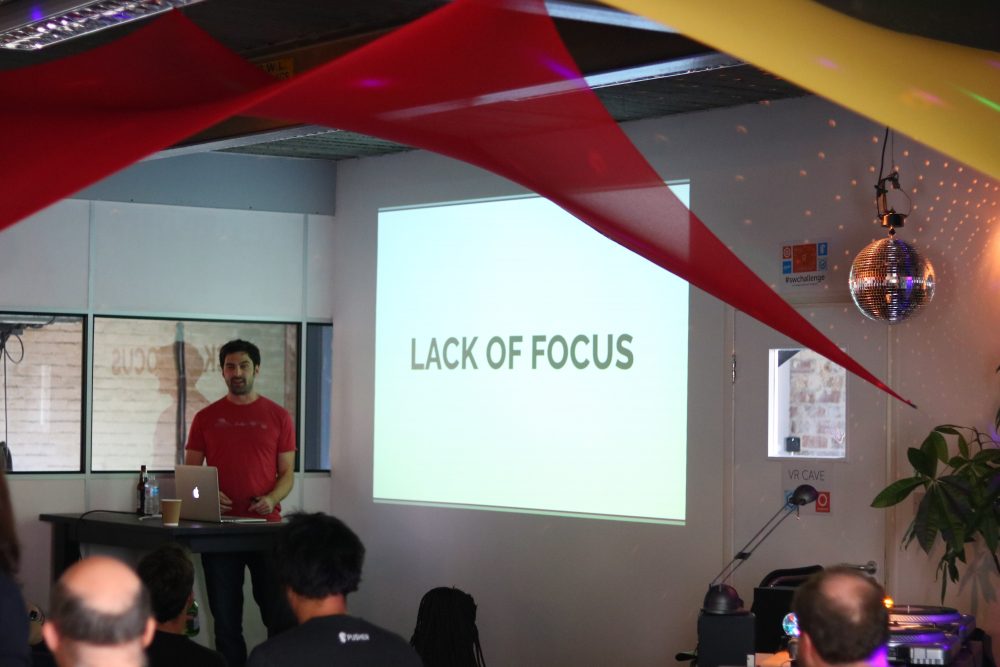
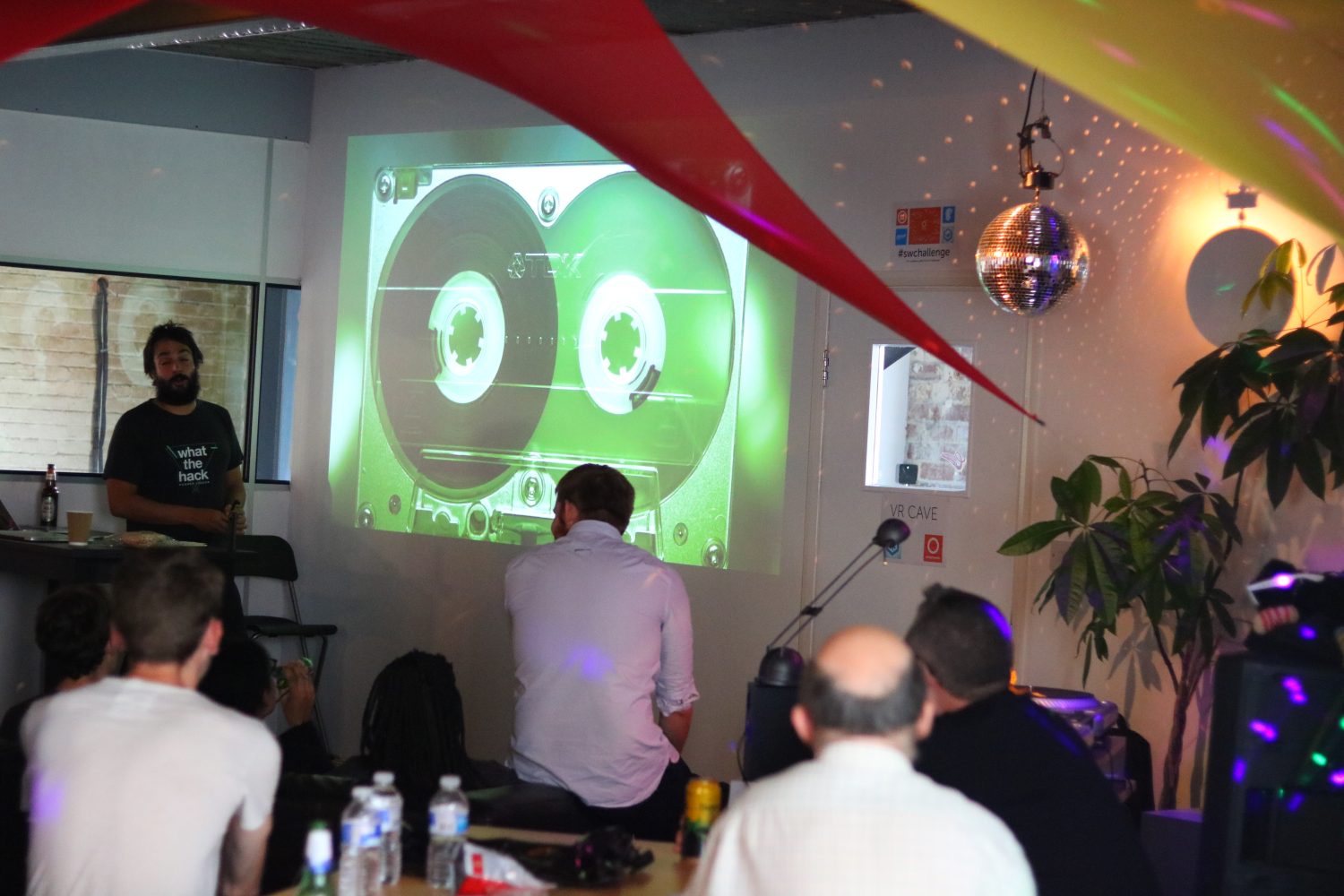
After a hot, homemade dinner courtesy of the amazing GeekFeeder, we got together to present the ideas.
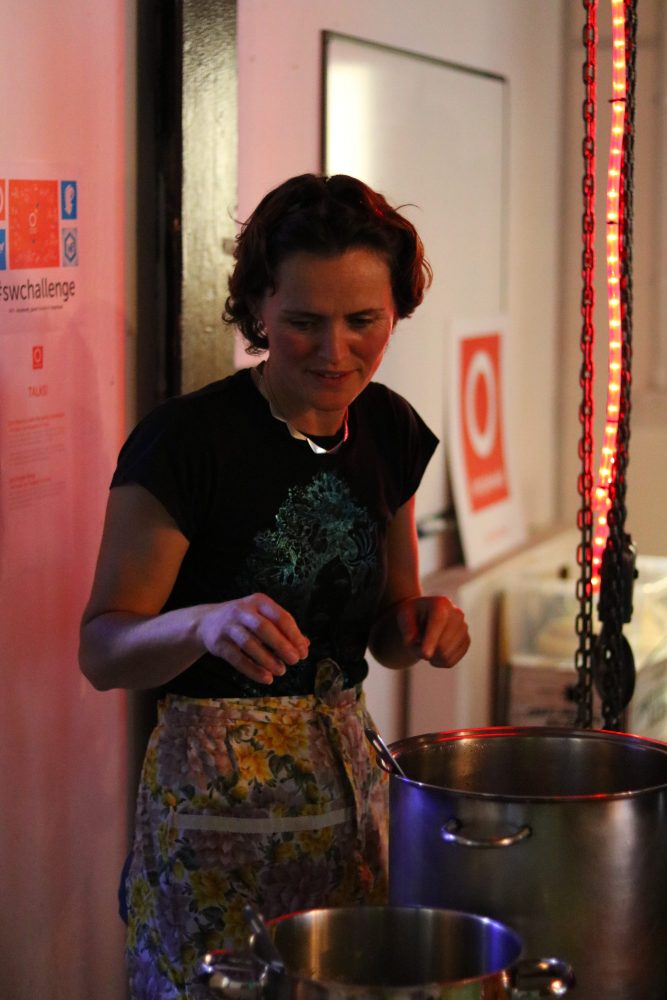
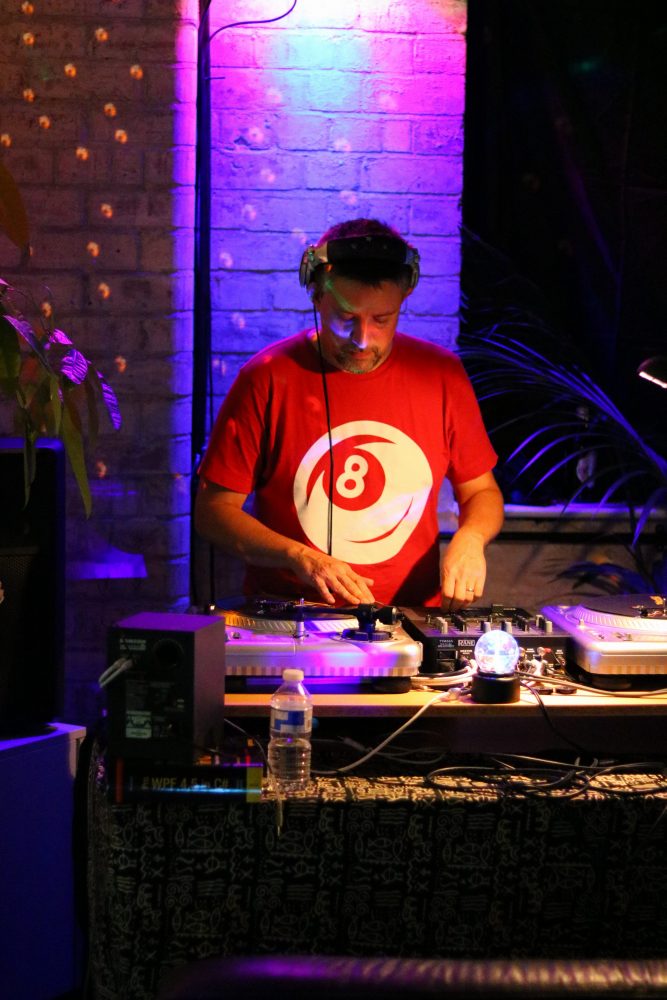
And the winners are…
The winners
Calaisboration – Most Innovative Concept
Kirstie
Kirstie has been volunteering for the Calais Refugee Solidarity Bristol (CRSB), a charity that aims to raise funds, raise awareness and raise the living standards of refugees in Calais, as well as campaigning for the rights of refugees and their safe passage through Europe. The CRSB stores and sorts donated items which are then sent to a warehouse in Calais which is run by volunteers.
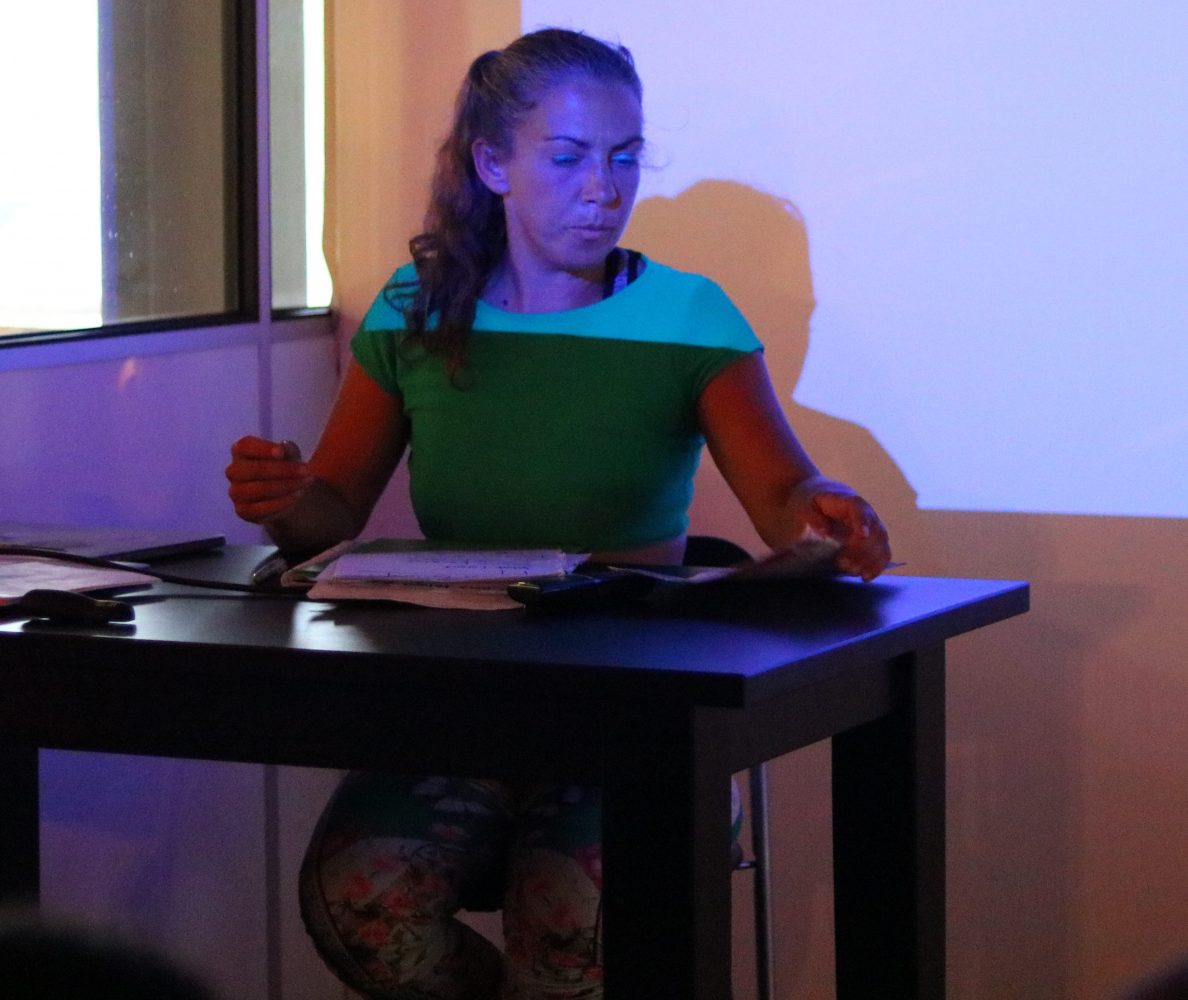
Kirstie spent the day working on an application that would text CRSB members a list of required items that were much needed in Calais.
“Twilio’s SMS messaging service could be used to message already engaged members the details of items in need of donation and location of collection points” says Kirstie. “The SMS service could also be used to find people who will be travelling to France who could deliver vital donations to the warehouse in Calais.”
As the CRSB receive many donations of unsuitable items, Kirstie’s concept application would contact agencies working alongside the CRSB to see if they required any of the items. “For instance a donation of a bedside lamp would be no good for the jungle camp” says Kirstie, “but may be suitable for agencies setting up accommodation for new arrivals of refugee families.”
TwilioBox and Literate Giggle – Joint Winners of Most Innovative Tech Hack
Seeing as the judges couldn’t make up their mind, we split the Most Innovative Tech Hack prize between the two favourites…
TwilioBox
@labfoo
Simpleweb developer Adam used Twilio to call around 7,000 phone boxes around the world. When (if) anyone answered, they would hear an automated message telling them about the experiment and when (if) they accepted, they would be connected with Adam. Only two people accepted and neither were up for a conversation…
Literate Giggle
@rumyra, @marcus_noble_, @TickleThePanda
Ruth, Marcus and Thomas built a crowd sourced storytelling installation.
The team thought that the future of chat was looking pretty bleak. “We’ve already stopped talking to the person sitting next to us via our own voices and only through the means of Slack, paper copies of books are depleting” says Marcus, “the only thing that’s left are our phones…”
With this in mind, Ruth, Marcus and Thomas decided to build an app that allows users to tell a story with their phones. But not just one phone… In order to hear the full story, a group of users would need to join together, pick a phrase, and have their devices split the story between them.
You can see the original code on GitHub here: github.com/AverageMarcus/literate-giggle
What’s Up Bot – Most Absurd
@CoachCoen
“What have we been teaching our computers?” asks Coen. “When they chat to each other it’s all bits and bytes, but no please or thank you. It’s time to show them how to be friendly and sociable.”
Coen wanted to use his laptop to control a Raspberry Pi robot through friendly and polite language. “As I’d recently got a couple of BBC micro:bits, which can use radio to communicate between them” says Coen, “this seemed like a nice opportunity to play with them. I’d already built the robot platform, so “all” I had to do was wire up the electronics between the RPi and the motors, and write 4 different Python scripts and a simpler Angular front end, in 7 hours.”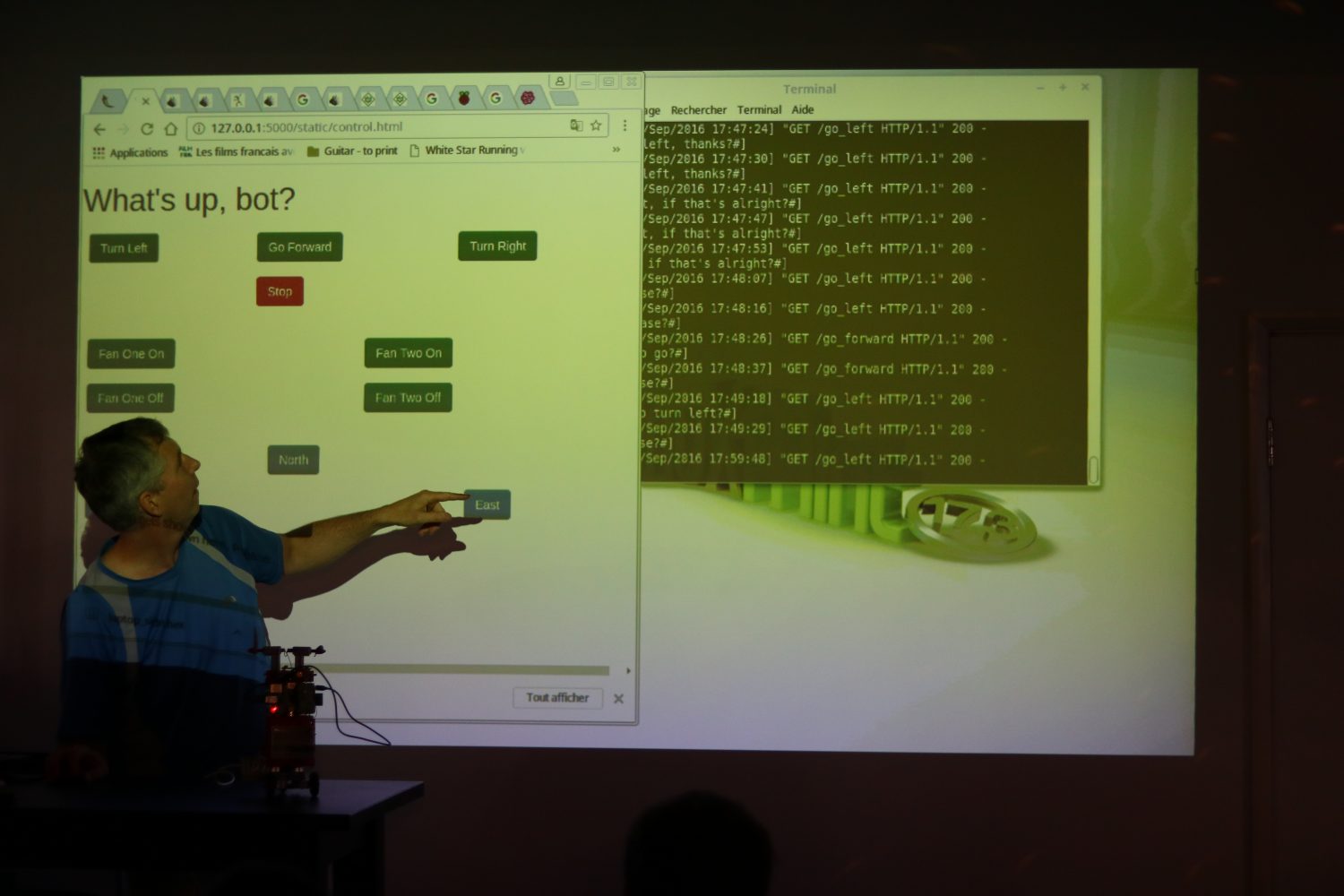 Once everything was connected, Coen added “please”, “thank you” and “if you don’t mind” at random to the commands.
Once everything was connected, Coen added “please”, “thank you” and “if you don’t mind” at random to the commands.
“On the receiving side, the Python AIML (Artificial Intelligence Markup Language, an XML dialect for creating natural language software agents) library then “listens” to the requests, and decodes them into responses” explains Coen. “To drive the motors I added some commands to this. The command is used to control the motors. The rest of the reply should be sent back to the laptop, to get a proper conversation going by having an AIML script running on both sides. Unfortunately there wasn’t enough time for this second part.”
A small Angular and Bootstrap based web page gave Coen a set up buttons which called the relevant Flask/Python API endpoints for left, right, forward, etc. “The same page should have shown the conversation between the laptop and the robot/RPi, but with the limited time available and the unreliable communications this didn’t happen” he says.
“This worked – once” Coen says. “I clicked on the Left button, Flask/Python received this request at localhost:5000/go_left, and passed the string “Could you please turn left”, which was sent via the two micro:bits to the RPi. Python AIML recognised this as a pattern, and created the reply “go_left Will do”, which drove the RPi’s GPIO ports to send the signals to the motors to turn the robot left.”
Mood Lighting – Most Commercially Viable
@karlentwistle
Mood Lighting by Simpleweb developer, Karl, makes lightbulbs change colour in synchronisation with the content that’s currently being displayed on your screen.
Karl used three Philips Hue White and Colour Ambience Wireless Lighting LED’s in combination with a Ruby script that takes a screenshot of your monitor. Once it’s got the screenshot it uses imagemagick’s quantize extract function to determine the colour that is being used the most within the screenshot. It then pushes this colour to the bulbs and they change to correspond to what you’re seeing. It does this about every 0.3 seconds. Hopefully if you’re watching a movie or TV show it will add some extra ambience to the experience.
GitBot – Simpleweb Prize
David Moody
Chosen to win the Simpleweb Prize by Managing Director Mark, GitBot is a Slackbot that knows about git repositories.
“The idea was that you could ask it questions in plain English without having to already know what git commands to use” says David. “For example, you could ask about the top contributors, what has changed over the last week or what branches exist.”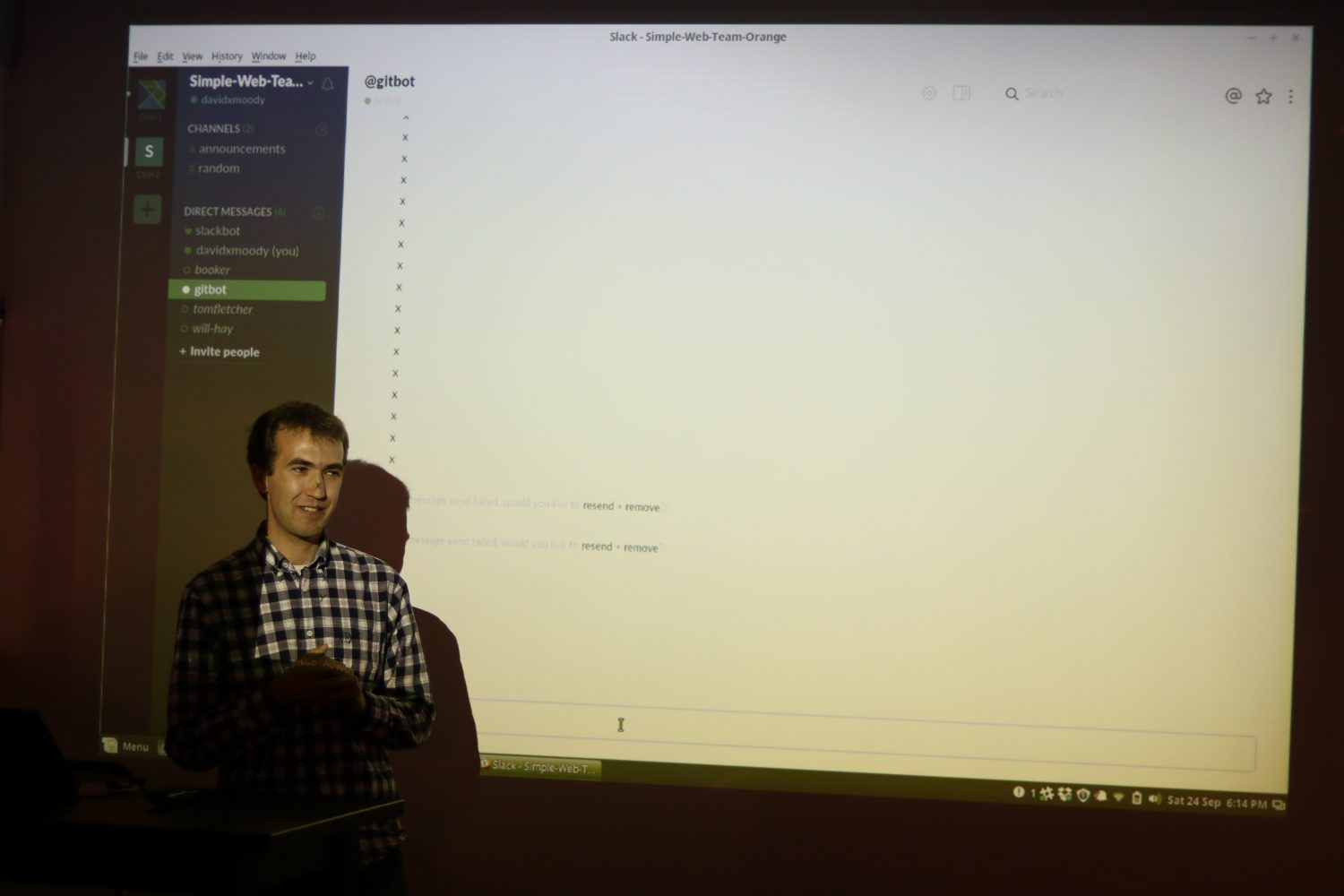
David used a framework called Botkit which runs on Node.js and uses the official Slack APIs. He then combined it with some shell commands to clone a git repo and gather a few statistics.
TuneBot – People’s Choice
@nickwforsberg, @adenforshaw
Simpleweb product Manager Nick and Coull CEO Aden created a crowd-based collaborative pub quiz bot. “TuneBot could be the next big thing in crowd based collaborative music quizzes” says Nick. “Gone are the days of the standard pub quiz with a slightly awkward compare… You the know the type.”
Anyone can join a TuneBot quiz by sending a message to TuneBot via Telegram. With each round, users receive a question then a special keyboard designed to take multiple choice answers. The questions are based on the track playing on the pub speakers. Questions include things like – what was the year, name the artist, name the track name, name the film it was related to etc. At the end of the round the system collects everyone’s answer and then decides who’s the winner. The players get published on the big screens (if available) and via a further text message.
Thanks for coming!
A final thank you to our sponsors, Twilio, Pusher and Marvel, and supporters Opposable VR and Sketch.

We had a brilliant day and we can’t wait until the next one!
Join us on Meetup to find out about our upcoming events!
